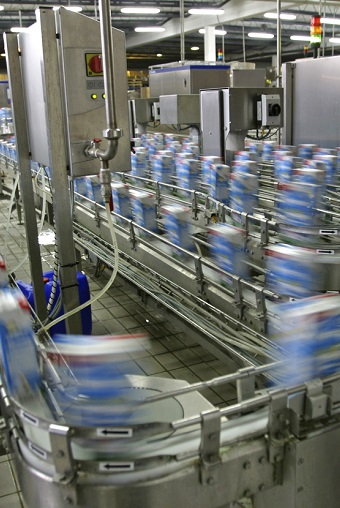Chemicals, Coatings & Plastics Industry Market Research
Competitive Intelligence, Business Analysis, Forecasts, Market Size, Trends, Companies, Statistics
Available Data Services: Custom Research Projects, Database Subsription or PDF eBooks
PLUNKETT PROVIDES IN-DEPTH STATISTICS TABLES COVERING THE FOLLOWING INDUSTRY TOPICS:
-
Chemicals, Coatings & Plastics Industry Statistics and Market Size Overview
-
U.S. Exports & Imports of Chemicals: 2015-1st Quarter 2021
-
U.S. Exports & Imports of Chemicals: 2017-2022
-
U.S. Exports & Imports of Organic Chemicals: 2017-2022
-
U.S. Exports & Imports of Inorganic Chemicals: 2017-2022
-
U.S. Exports & Imports of Plastics & Plastics Products: 2017-2022
-
U.S. Exports & Imports of Rubber & Rubber Products: 2017-2022
-
U.S. Exports & Imports of Explosives & Pyrotechnic Products:2015-1st Quarter 2021
-
U.S. Exports & Imports of Fertilizers: 2017-2022
-
U.S. Exports & Imports of Pharmaceutical Products: 2017-2022
-
Chemicals & Plastics Industry Employment, U.S.: 2016- May 2023
-
Employment & Wages in Chemicals Industry Occupations, U.S.: May 2022
-
Value of Manufacturers’ Shipments for Chemical Products Manufacturing Industries, U.S.: Monthly, January 1992-May 2021
-
Crude Oil Production & Drilling Activity, U.S.: Selected Years, 1991-2022
-
Monthly Value of Manufacturers’ Shipments & Inventories in the Chemicals, Plastics & Rubber Products Industries, U.S.: March-May 2021
-
Gross Output in the Chemicals, Plastics & Rubber Products Manufacturing Industries, U.S.: Selected Years, 2016-2021
-
Natural Gas Overview, U.S.: Selected Years, 1950-2020
-
Natural Gas Prices Paid, by Sector, U.S.: Selected Years, 1970-2020
-
Refinery Sales Prices for Selected Petroleum Products, U.S.: Selected Years, 2008-2017
-
Refinery Sales Prices for Selected Petroleum Products, U.S.: Selected Years, 2009-2019
-
Exports, Imports & Trade Balance of Chemicals, U.S.: 2017-First Half 2023
-
Refinery Capacity & Utilization in the U.S.: Selected Years, 2000-2022
-
Refinery Sales Prices for Selected Petroleum Products, U.S.: Selected Years, 2005-2016
-
Top World Oil Producers: 2022
-
Natural Gas Overview, U.S.: Selected Years, 1975-2022
Top Companies Profiled
The following is a partial listing for this industry. As a subscriber, you will have access to the leading companies and top growth companies. This includes publicly-held, private, subsidiary and joint venture companies, on a global basis as well as in the U.S.
Hundreds of Top Companies Profiled, Including:
PLUNKETT PROVIDES UNIQUE ANALYSIS OF THE FOLLOWING TRENDS THAT ARE DRIVING THIS INDUSTRY:
-
Introduction to the Chemicals, Coatings & Plastics Industry
-
Plastic Processing Technologies Have Evolved According to Specialized Needs
-
The Coronavirus’ Effect on the Chemicals, Coatings & Plastics Industry
-
Global Demand for Plastics Will Soar Over the Long Term
-
China’s Plastics Market to Grow/China Is a Major Chemicals Import Market
-
Petrochemicals Plants in the Middle East Expand but Face Challenges
-
India’s Plastics and Chemicals Sectors Grow/India Is Home to Massive Petrochemical Plants
-
New Display Technologies with PLEDs
-
Refineries Along with Chemicals and Plastics Plants Invest Heavily in U.S./Take Advantage of Shale Natural Gas
-
Breakthroughs in Plastic Recycling
-
Chemical Plants Increase Security Measures
-
Environmentalists Campaign for Chemical Industry Reform
-
Packaging Technology Improves/Wal-Mart and Coca-Cola Boost Packaging Sustainability
-
Bio-plastics Become a Reality/Plastic Packaging Made from Corn and Soy
-
Nanotechnology Sees Applications in Fuel Cells and Solar Power/Micro Fuel Cells to Power Mobile Devices
-
Nanochemicals Deliver Advanced Coatings and Specialty Chemicals
-
Self-Assembly and Fabrication on the Atomic Level Enable Nanomanipulation
-
Ethanol Production Soared, But U.S. Federal Subsidy Expires
-
Cellulosic Ethanol Makes Slow Commercial Progress
-
Manufacturers Focus on High Performance Plastics and Specialty Chemicals
-
HPTP Thermoplastics, Thermoset and Engineered Plastics Enable Advanced Products/Nanocomposites Offer the Ultimate in Advanced Materials
-
The Future of the Global Chemicals Industry, Driven by Specialty Needs and a Growing Middle Class
Key Findings:
- Plunkett Research analyzes the top trends changing the industry, and provides in-depth industry statistics. In addition, this publication lists the top profiles top 400 companies in the Chemicals, Coatings & Plastics Industry.
Available Formats:
- Printed Almanac: ISBN 978-1-62831-644-5 (Available Now)
- E-book: ISBN 978-1-62831-969-9 (Available Now)
- Plunkett Research Online (Subscribers)
Key Features Include:
- Industry trends analysis, market data and competitive intelligence
- Market forecasts and Industry Statistics
- Industry Associations and Professional Societies List
- In-Depth Profiles of hundreds of leading companies
- Industry Glossary
Pages: 554
Statistical Tables Provided: 14
Companies Profiled: 416
Geographic Focus: Global
Price: $399.99
Key Questions Answered Include:
- How is the industry evolving?
- How is the industry being shaped by new technologies?
- How is demand growing in emerging markets and mature economies?
- What is the size of the market now and in the future?
- What are the financial results of the leading companies?
- What are the names and titles of top executives?
- What are the top companies and what are their revenues?
This feature-rich book covers competitive intelligence, market research and business analysis—everything you need to know about the Chemicals, Coatings & Plastics business including:
- Introduction to the Chemicals, Coatings & Plastics Industry
- Plastic Processing Technologies Have Evolved According to Specialized Needs
- Global Demand for Plastics Will Soar Over the Long Term
- China’s Plastics Market to Grow Long-Term/China Is a Major Chemicals Import Market
- Petrochemicals Plants in the Middle East Expand but Face Challenges
- India’s Plastics and Chemicals Sectors Grow/India Is Home to Massive Petrochemical Plants
- New Display Technologies with PLEDs
- Refineries Along with Chemicals and Plastics Plants Delay Expansion Projects in U.S.
- Breakthroughs in Plastic Recycling
- Chemical Plants Increase Security Measures
- Environmentalists Campaign for a Greener Chemical Industry
- Packaging Technology Improves/Wal-Mart and Coca-Cola Boost Packaging Sustainability
- Bio-plastics Become a Reality/Plastic Packaging Made from Corn and Soy
- Nanochemicals Deliver Advanced Coatings and Specialty Chemicals
- Self-Assembly and Fabrication on the Atomic Level Enable Nanomanipulation
- Ethanol Production Soared, But U.S. Federal Subsidy Expires
- Cellulosic Ethanol Makes Slow Commercial Progress
- Manufacturers Focus on High Performance Plastics and Specialty Chemicals
- HPTP Thermoplastics, Thermoset and Engineered Plastics Enable Advanced Products/Nanocomposites Offer the Ultimate in Advanced Materials
- The Future of the Global Chemicals Industry, Driven by Specialty Needs and a Growing
Middle Class
Chemicals, Coatings & Plastics Industry Statistics
- Chemicals, Coatings & Plastics Industry Statistics and Market Size Overview
- U.S. Exports & Imports of Chemicals: 2016-2021
- U.S. Exports & Imports of Organic Chemicals: 2016-2021
- U.S. Exports & Imports of Inorganic Chemicals: 2016-2021
- U.S. Exports & Imports of Plastics & Plastics Products: 2016-2021
- U.S. Exports & Imports of Rubber & Rubber Products: 2016-2021
- U.S. Exports & Imports of Fertilizers: 2016-2021
- U.S. Exports & Imports of Pharmaceutical Products: 2016-2021
- Gross Output in the Chemicals, Plastics & Rubber Products Manufacturing Industries, U.S.: Selected Years, 2014-2020
- Chemicals & Plastics Industry Employment, U.S.: 2015- March 2022
- Employment & Wages in Chemicals Industry Occupations, U.S.: May 2021 Crude Oil Production & Drilling Activity, U.S.: Selected Years, 1990-2021
- Top World Oil Producers: 2021
- Natural Gas Overview, U.S.: Selected Years, 1950- 2021
- Refinery Capacity & Utilization in the U.S.: Selected Years, 2016-2021
Companies Mentioned Include:
- China Petroleum & Chemical Corporation (Sinopec)
- China National Petroleum Corporation (CNPC)
- Exxon Mobil Corporation (ExxonMobil)
- Samsung Electronics Co Ltd
- TotalEnergies SE
- BP plc
- Chevron Corporation
- Cargill Incorporated
- Tata Group
- Koch Industries Inc


















